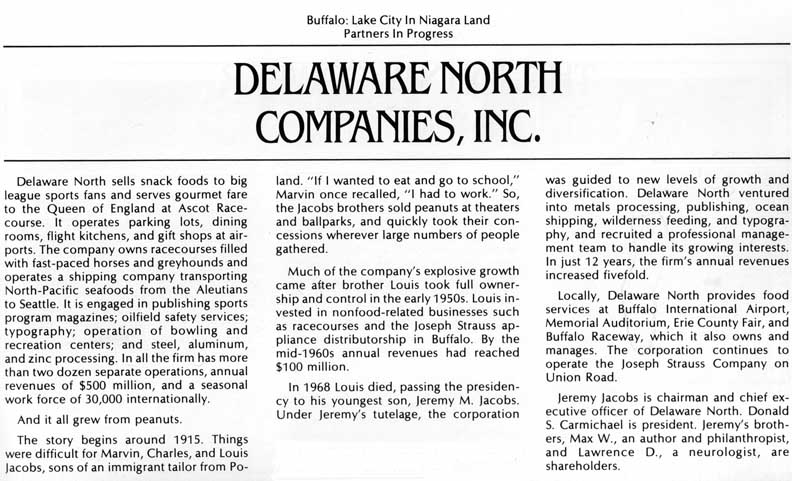![]()
Williams-Butler
House
- Table of Contents
History
- Williams-Butler House / Jacobs Executive
Development Center
AKA
The Butler Mansion
TEXT Beneath Illustrations
 An early lithograph of the Aaron Rumsey mansion which was razed and replaced by the Williams mansion.  George L. Williams built his house on the Delaware-North location, the most prestigious corner in the city George L. Williams House NW Delaware Avenue at North Street  690 Delaware next door on Delaware. Built by George's older brother, Charles.

Architect Stanford White (McKim, Mead
and White).  Edward Butler bought the house when George Williams left Buffalo in disgrace  The previous Butler House was located at 429 Linwood Ave. 
Edward Butler Mausoleum in Forest Lawn Cemetery  Metcalfe House was razed for a parking lot for Delaware North Companies in 1979. Presently (2013) a garden/parking lot (photo)
Reprint
|
| 1896-1899 Lake Erie was visible from the house. See also: Highlights of Buffalo's History, 1898 |
|
|
SIZE: |
16,000 square feet in the main house and an additional 8,000 square feet in the carriage house |
|
ARCHITECTS: |
Stanford White (McKim, Mead and
White). One of the last houses Stanford White built before he was assassinated by jealous Harry K. Thaw. Stanford White's first contribution to Buffalo architecture was as associate architect to H.H. Richardson when he designed the Buffalo State Hospital in 1870. White's second Buffalo work involved the James F. Metcalfe House, designed three years after White had joined McKim and Mead to form their avant-garde architectural firm. |
|
OWNERS: |
George L. Williams and his wife Annie built this house on the Delaware-North location, the most prestigious corner in the city. His brother, Charles, built the house next door (the Williams-Pratt House /LiRo Group Building). "They
[George and
Charles] were sons of Gibson T. Williams, a banker and
industrialist.
They once owned what was reputedly the largest tannery
in the United
States in Salamanca but sold it and concentrated on
investing." - Buffalo's
Delaware Avenue: Mansions and Families, by
Edward T. Dunn. Pub. by Canisius
College Press, 2003 See also: Williams
Family
- Table of Contents In 1873, he came to Buffalo and established the Sunday News. That paper was enlarged twice before the establishment of the daily News. In 1879, Mr. Butler established the Bradford Sunday News, which he continued to own and to publish for four years, when he sold it to be able to give more time to the Buffalo Evening News, which he established in October, 1880. Mr. Butler was elector-at-large on the Republican ticket in 1896, and again in 1900. In the latter year, he was chairman of the Board of Electors of the State. He was a delegate-at-large in 1908 to the Republican National Convention at Chicago. Mr. Butler
married Miss Mary E.
Barber of West
Pittston, daughter of Major William D. Barber. Mr. and
Mrs. Butler were
the parents of four children.
See the Business First article entitled "Butler Kin Recalls Mansion's Heyday. Edward Hubert Butler I is listed in the City of Buffalo Directory as living at the following addresses:
See also: Butler Family - Table of Contents ----------- In
1979, Delaware North Companies (Website)
bought the house and
the adjoining property on North Street, the Metcalfe
House. After
a fierce preservation battle, Delaware North
demolished the Metcalfe
mansion next door
(also designed by McKim, Mead
and White) for use as a parking lot. In 1990,
Delaware
North sold the building to Varity
Corp. to serve as its world
headquarters. From 1980 until 1996, Victor A. Rice was Chief Executive Officer and Chairman of Varity Corporation. Varity
removed the
parking lot, installed a lush garden, and constructed
the lighted fountain
located in the
center's granite courtyard. They also renovated the
mansion. Varity was acquired by a Cleveland Co., and in 1999 the center was again acquired by Delaware North Companies, whose CEO, Jeremy M Jacobs Sr., then deeded the property to SUNY at Buffalo. Now named the Jacobs Executive Development Center. |
|
STYLE: |
Georgian
Revival Built on a grand scale and costing nearly $175,000-- a breathtaking sum in those days Three stories: 16,000 sq. ft.; carriage house has 8,000 sq. ft. Speakeasy in basement from the 1920s. |
|
BUILDING MATERIAL: |
Roman brick, limestone; granite foundation. |

